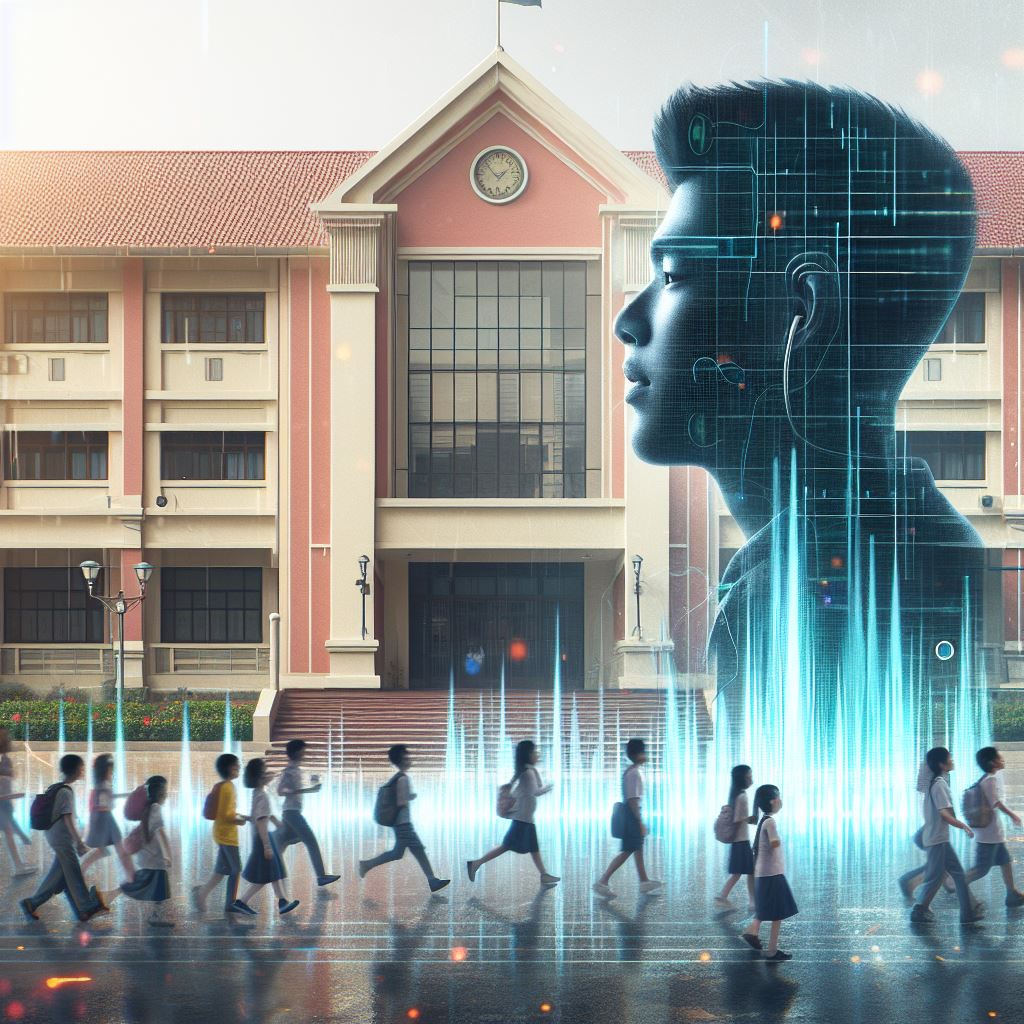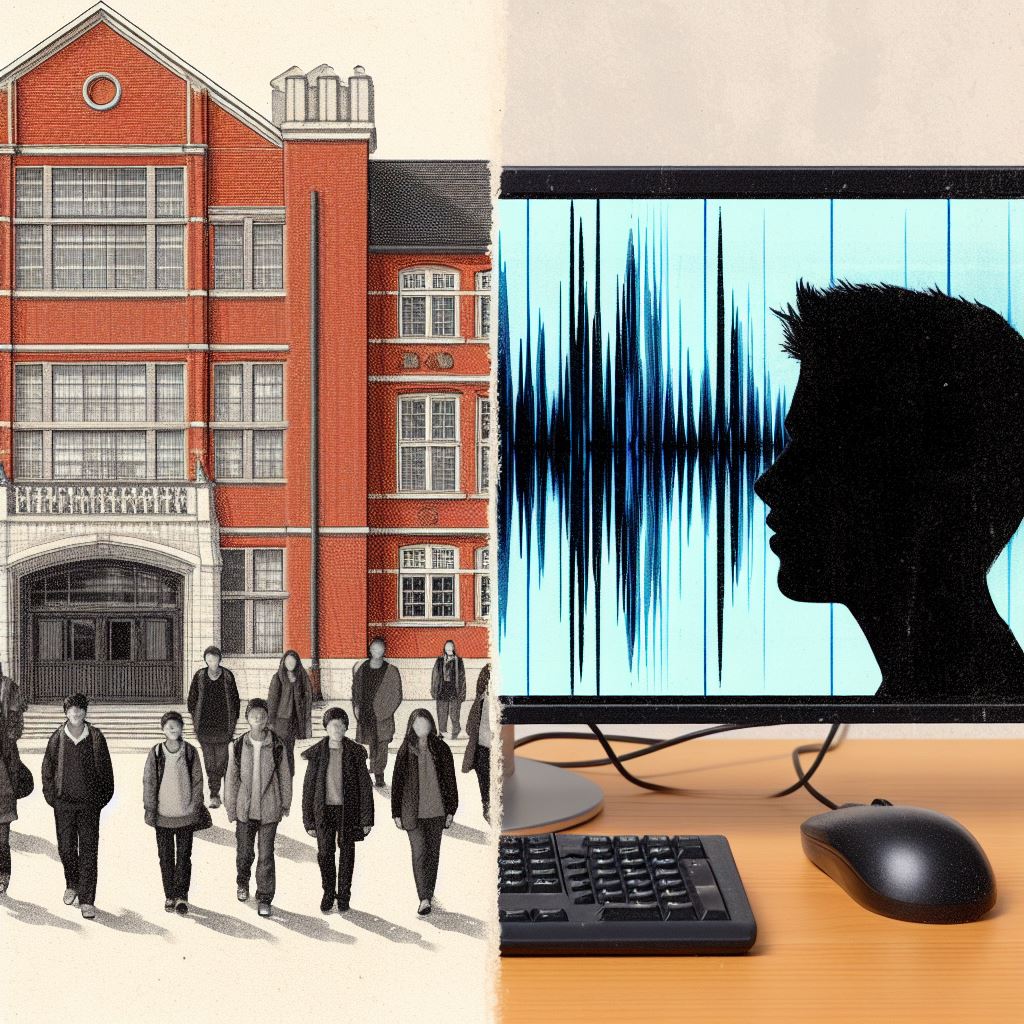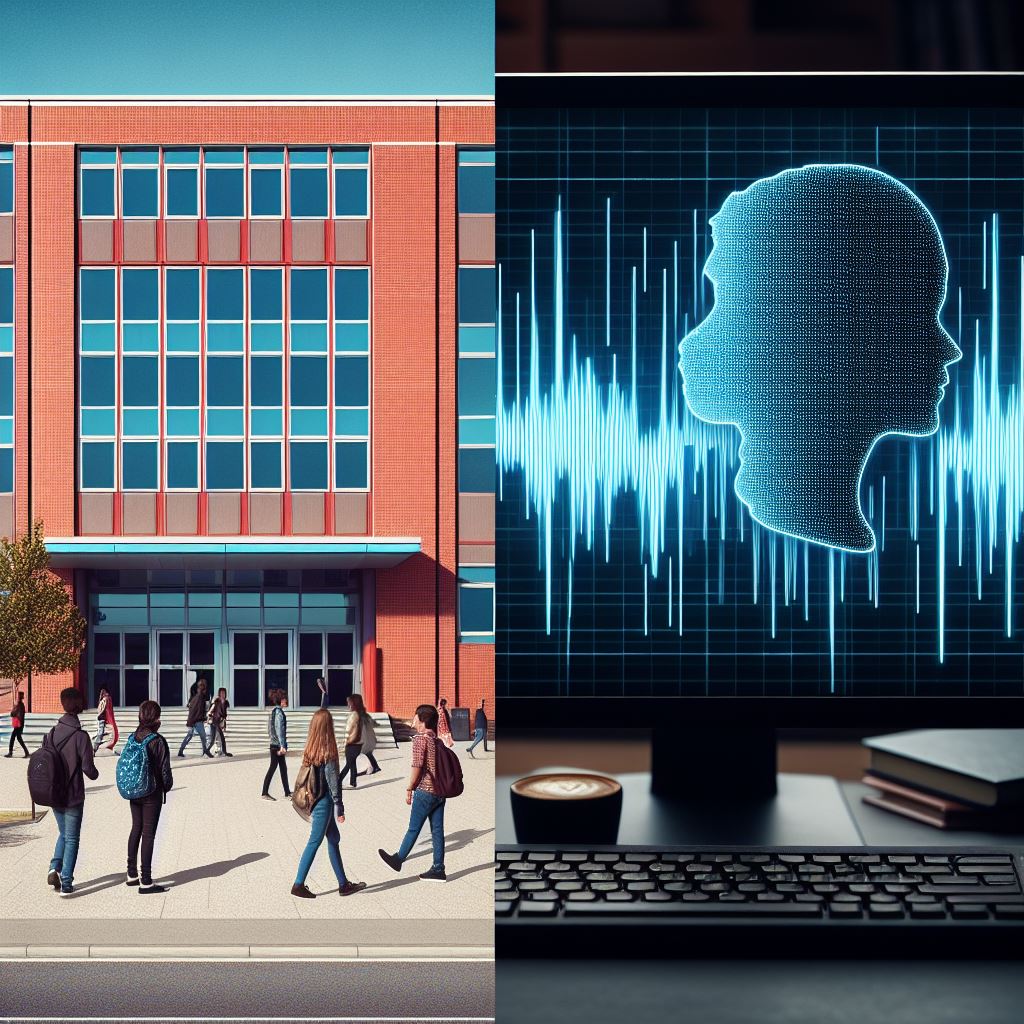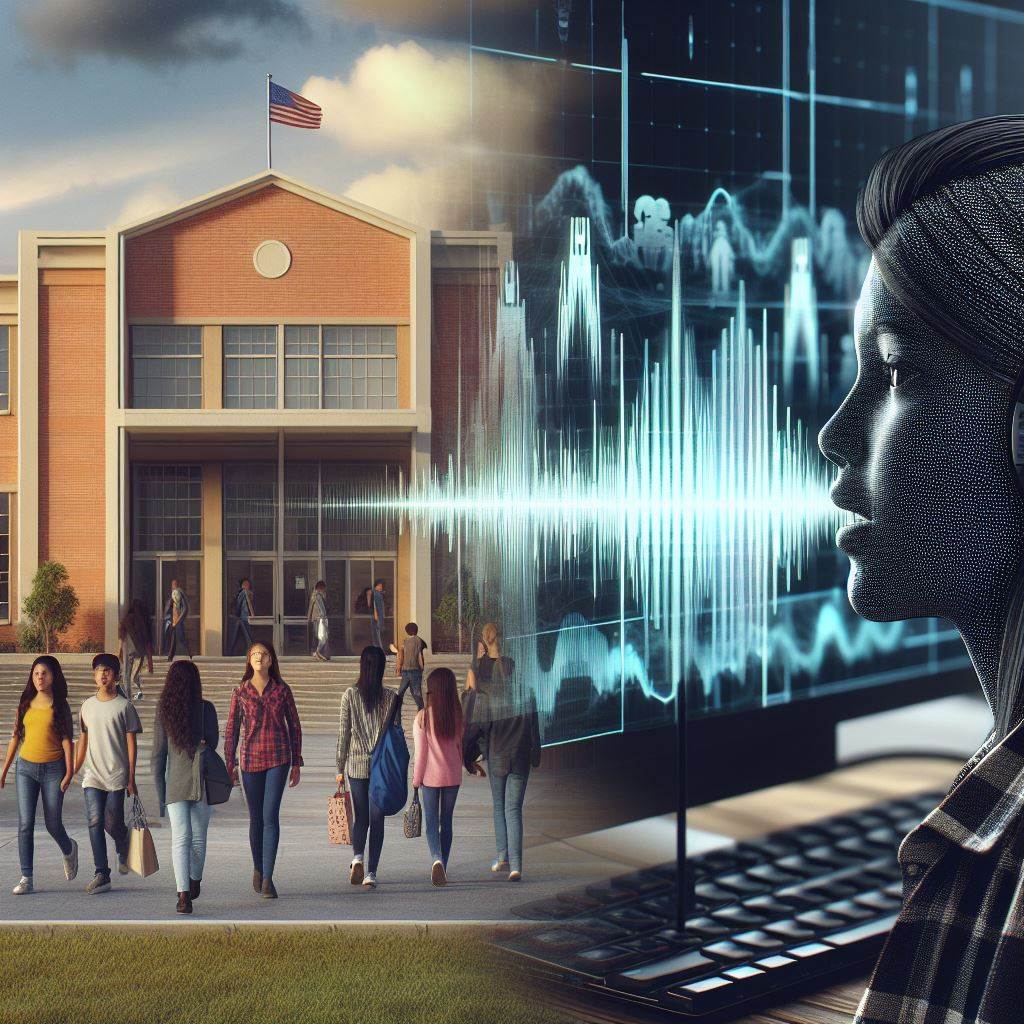Table of Contents
This week, Baltimore was rocked by a disturbing case that exposed the potential for misuse of artificial intelligence (AI). Dazhon Darien, the former athletic director at Pikesville High School, was arrested at Baltimore/Washington International Thurgood Marshall Airport (BWI) for allegedly using AI to fabricate a damning audio recording of the school’s principal, Eric Eiswert.
The incident began in January when a recording surfaced online featuring a voice, eerily similar to Eiswert’s, spewing racist and anti-Semitic remarks. The audio sparked outrage within the community, leading to Eiswert’s temporary removal from his position while an investigation ensued. The recording, however, raised immediate red flags for its unnatural cadence and lack of context. AI experts consulted by the Baltimore County Police Department (BCPD) confirmed their suspicions: the voice was a sophisticated deepfake, a type of AI-generated content that can manipulate audio or video to make it appear real.

Following a meticulous investigation, authorities unraveled a scheme allegedly orchestrated by Darien. According to Baltimore County Police Chief Robert McCullough, investigators believe Darien used AI to create the fake recording, possibly in retaliation for an internal investigation Eiswert had launched into the potential mishandling of school funds.
The case raises a multitude of troubling questions. How accessible is this type of AI technology? What safeguards are in place to prevent its misuse? And perhaps most importantly, what impact does such manipulation have on trust within institutions like schools?
The Allure and Peril of Deepfakes
Deepfakes, a portmanteau of “deep learning” and “fake,” are a rapidly evolving technology that leverages artificial neural networks to create highly realistic audio and video forgeries. While deepfakes hold immense potential for entertainment and creative expression, their ability to manipulate reality presents a significant threat. Malicious actors can use them to spread misinformation, damage reputations, and sow discord.
The Darien case highlights the increasing ease with which deepfakes can be created. While sophisticated software may have been used initially, readily available apps and online services are lowering the barrier to entry. This democratization of deepfake technology, while exciting for some, raises serious concerns about its potential for misuse by those with malicious intent.
The Erosion of Trust
The impact of deepfakes extends far beyond the immediate victim. In the case of Eiswert, the fabricated recording eroded trust within the Pikesville High School community. Students, parents, and faculty were understandably shaken by the accusations against their principal. The incident also cast a shadow over Eiswert’s reputation, causing emotional distress and potentially jeopardizing his career.
Beyond individual cases, deepfakes pose a systemic threat to trust in institutions. When the very fabric of reality can be manipulated, it becomes difficult to discern truth from fiction. This can lead to skepticism toward legitimate news sources, a decline in civic engagement, and a rise in social unrest.
Combating the Deepfake Threat
Addressing the growing threat of deepfakes requires a multi-pronged approach. Here are some crucial steps:
- Tech Industry Response: Technology companies developing deepfake software must prioritize the development of detection tools that can identify manipulated content. Additionally, user education is paramount, teaching individuals how to critically evaluate information encountered online.
- Legal Framework: Currently, there is a lack of comprehensive legislation governing deepfakes. Laws need to be established that address the creation and distribution of malicious deepfakes, while protecting legitimate artistic expression.
- Media Literacy: Educational initiatives should be implemented to foster media literacy skills within the public. This would involve training individuals on how to identify potential deepfakes and how to verify the authenticity of online content.

The Dazhon Darien case serves as a stark reminder of the potential dangers associated with AI. While this technology offers tremendous benefits, it is crucial to acknowledge its potential for misuse. By working collaboratively, the tech industry, policymakers, and the public can develop safeguards to mitigate the risks posed by deepfakes and ensure responsible use of this powerful technology.
The Human Cost
Beyond the technological and legal discussions, it’s important to remember the human cost of such actions. Eric Eiswert, the victim in this case, was subjected to public humiliation and professional jeopardy based on a fabricated recording. School communities thrive on trust and respect, and incidents like this can have a lasting impact on the learning environment.
A Look Forward
The arrest of Dazhon Darien may be the first high-profile case of its kind, but it’s unlikely to be the last. As AI technology continues to evolve, so too will the potential for its misuse. The onus lies on all of us – tech developers, policymakers, and the public – to work together to create a future where AI serves as a force for good, not a tool for manipulation .
The Darien Case: Unanswered Questions and Lingering Effects
The arrest of Dazhon Darien has sent shockwaves through the Baltimore community and beyond. While the case has shed light on the dangers of deepfakes, several questions remain unanswered.
Motive Unclear: Beyond Retaliation?
While authorities suspect retaliation as Darien’s primary motive, a deeper investigation may reveal more complex factors. Financial discrepancies mentioned in police reports hint at a possible embezzlement scheme. Did Darien create the deepfake to deflect suspicion from his alleged financial misconduct? Perhaps there were pre-existing tensions between Darien and Eiswert that fueled the act. A thorough investigation could unearth additional motives that paint a more complete picture.
Fallout for Pikesville High School
The incident has undoubtedly cast a long shadow over Pikesville High School. Restoring trust within the school community will require a concerted effort from administrators. Open communication and transparency are crucial. Principal Eiswert should address the faculty, students, and parents, acknowledging the disruption caused and outlining steps to rebuild trust. Furthermore, the school board should consider implementing educational programs on media literacy and the dangers of deepfakes. Equipping students with the skills to critically evaluate online content will be essential in the age of misinformation.
Wider Implications for Education
The Darien case raises concerns for the education sector as a whole. Schools are microcosms of society, and the potential for deepfakes to disrupt learning environments is significant. Imagine a fabricated recording targeting a popular teacher or a manipulated video sowing discord between student groups. School administrators nationwide should take note of the Baltimore incident and begin exploring preventative measures. This could include workshops on deepfake detection for staff and the integration of media literacy curriculums.
The Future of AI Regulation
The Darien case highlights the urgent need for clear regulations governing deepfakes. Current laws are largely inadequate when it comes to addressing manipulated content. Legislators should work with technology companies and legal experts to develop a framework that discourages the creation and distribution of malicious deepfakes, while safeguarding freedom of expression. Finding the right balance will be crucial in the fight against online manipulation.
The Search for Solutions: A Global Effort

The problem of deepfakes is not unique to Baltimore or the United States. It’s a global challenge that demands international cooperation. Tech companies operating across borders need to collaborate on developing detection tools and implementing user education initiatives. Additionally, international conferences and workshops on deepfake regulation could foster dialogue and encourage the sharing of best practices. By working together on a global scale, we can develop a more effective response to this evolving threat.
The Dazhon Darien case may be a cautionary tale, but it also presents an opportunity for progress. By acknowledging the dangers of deepfakes and taking proactive steps to mitigate them, we can ensure that AI technology serves as a tool for positive change, not a weapon for manipulation. The future of trust in our institutions, the integrity of information online, and the well-being of our communities may very well depend on our collective response.
News Articles:
- NBC News: [invalid URL removed] – “Teacher arrested, accused of using AI to falsely paint boss as racist and antisemitic”
- New York Daily News: [invalid URL removed] – “Baltimore educator accused of using AI to frame the school’s principal arrested at airport”
AI and Deepfakes Information:
- Wikipedia – Deepfake: https://en.wikipedia.org/wiki/Deepfake



